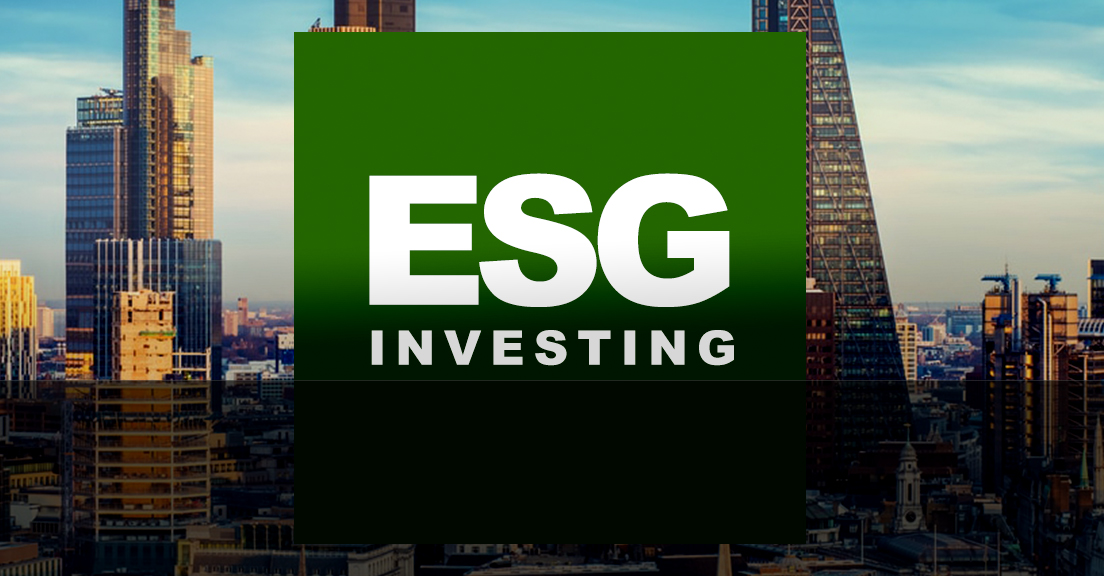Climate change and corporate credit: emerging trends in sustainable-impact lending practices lexology.comRead More
Impact Investing Forum 2024
https://impactinvestingconferences.com/
Online Event. Nov 06-07, 2024.
Book Now!
Drivers toward emphasizing ESG in the debt market
Environmental, social and governance (ESG) factors have exploded into the public discourse in recent years, especially with increased public awareness regarding the importance of companies using environmentally sustainable practices to stem climate change.[1] While many ESG initiatives are focused on social or governance metrics, such as increasing board diversity, workplace safety and equity programs, much of the regulatory, shareholder and political attention has been focused on curbing adverse environmental impacts.
Regulatory influences at all levels of government have amplified the spotlight on environmental factors, in some cases mandating that businesses reduce their carbon footprints. Canada adopted the ambitious emissions reduction targets of the Paris Agreement, set to be revisited this fall at the upcoming Conference of the Parties (COP) 26 UN Climate Change Conference in Glasgow. At the national level, the Supreme Court of Canada recently upheld the constitutionality of the federal government’s carbon pricing legislation, with some provinces choosing to implement their own carbon pollution pricing systems to meet or exceed federally mandated benchmarks.[2]
Corporations are facing increasing stakeholder demands for better environmental reporting and concrete action to reduce their corporate carbon footprints. At the same time, such pressures are also increasing on banks and institutional investors. In some cases, stakeholder groups are successfully pressuring commercial lenders to divest themselves entirely of companies engaged in upstream oil and gas production or other industries they perceive to be insufficiently aligned with the Paris Agreement.[3]
Increased pressure on companies is also coming from lenders and institutional investors themselves. On October 15, 2021, the “Big 6” Canadian Banks — BMO, CIBC, National Bank, RBC, Scotiabank and TD — announced their pledge to join the Net-Zero Banking Alliance, an industry-led, UN-convened global group of banks representing over one-third of global banking assets, which “are committed to aligning their lending and investment portfolios with net-zero emissions by 2050.”[4] In September, the second largest pension fund in Canada announced that it intends to divest from its remaining oil-producing assets.[5]
Sustainable financing in the debt markets
The confluence of these ESG pressures has increased global interest in sustainable financing. In some cases, financial institutions have stopped investing in certain industries entirely.[6] Given the Canadian economy’s current reliance on natural resources, such binary stances on climate-oriented investments in fossil fuel production, mining or other emissions-intensive industries could make it harder for domestic financial institutions to deploy their capital.
ESG principles have also worked their way into debt instruments in a more nuanced way. A borrower’s environmental performance can be reflected in a variety of sustainable financing vehicles, including project finance loans that incorporate the Equator Principles, green bonds or sustainability-linked bond issuances in the public or private debt capital markets, and social loans. All share a common feature in that coupon or other payment obligations are directly tied to the borrower’s or issuer’s performance on a specified ESG-oriented goal.
Arguably the most flexible debt product to have emerged in response to the ESG imperative is the sustainability-linked loan. As a result of their flexibility, in our view, sustainability-linked loans are poised to experience exponential growth in Canada’s debt markets in the coming years.
Features of sustainability-linked loans
Sustainability-linked loans are defined as “any types of loan instruments and/or contingent facilities (such as bonding lines, guarantee lines or letters of credit) which incentivize the borrower’s achievement of ambitious, predetermined sustainability performance objectives.”[7] These incentives are always tied to the borrower’s actual performance against predetermined ESG metrics agreed upon by the borrower and the lender group.
Sustainability-linked loans can be project-specific loans, term loans or, unlike most other sustainable debt instruments, revolving credit facilities used for general corporate purposes. To legitimize and standardize sustainability-linked loans, many of these loans are negotiated using the framework of the Sustainability-Linked Loan Principles, most recently updated in July 2021.[8] Sustainability-linked loans employing these principles contain four key elements:
1. The borrower’s sustainability objectives
To improve its ESG profile over time in a way that makes sense for its business, the borrower must select a performance target that is relevant and material to its overall business or future strategic operating plans. Common environmental targets revolve around reducing carbon emissions, improving energy efficiency, generating or consuming renewable energy, conserving water, sustainable farming, earning a recognized ESG certification or improving a third-party ESG rating.
Loan markets are relationship-driven. By using sustainability-linked loans, borrowers and lenders can customize the structure of a debt instrument’s terms to reflect the borrower’s business as well as the lender’s own sustainability objectives. The customizable and bilaterally negotiated performance target is an attractive feature of sustainability-linked loans, given that blunter instruments like third-party ESG ratings have come under scrutiny in recent years for their biases and lack of standardization.
Whichever sustainability targets parties select, they should be clearly defined (including a baseline level and calculation methodology), measurable and ambitious. To meet the “additionality” requirement of credible climate-oriented programs, a sustainability-linked loan’s performance target must represent a meaningful improvement in the borrower’s current business practices. Targets should also be able to be benchmarked against the borrower’s historical performance, against its industry peers or against global or national targets.
2. Loan features
Use of proceeds. A key feature of sustainability-linked loans is that they permit the borrower to use the proceeds of the loan for general corporate purposes. Unlike green bonds or green loans, a borrower’s use of sustainability-linked loan proceeds is not restricted to eligible green projects. Of course, a borrower will need to make investments in its business to achieve meaningful sustainability improvements, but the borrower does not need to restrict its use of the loan proceeds to such investments.
Financial incentives. Most commonly, sustainability-linked loans embed a discount to interest rates payable by the borrower upon achievement of its predetermined sustainability targets. Discount rates are case-specific and vary based on the difficulty the borrower faces in achieving its sustainability targets. They are always bilaterally negotiated. Importantly, a borrower’s failure to achieve its sustainability goals is not an event of default and does not entitle the lenders to accelerate the loan, enforce against any collateral or trigger cross-defaults to other debt products.
3. Reporting
The borrower under a sustainability-linked loan must be prepared to report regularly (at least once per year) on its actual performance against the agreed-upon targets. Where the company has public disclosure obligations, a public corporate social responsibility reporting practice or other regulatory requirements for public reporting, the public may also access the borrower’s performance data. However, one of the benefits of sustainability-linked loans compared to other ESG-oriented debt products is that they permit borrowers to maintain a high degree of confidentiality around their commercially sensitive practices and share only the results of their actual performance against their sustainability targets.
4. Review or third-party verification
To extend a sustainability-linked loan’s credibility, where a borrower does not offer public reporting on its sustainability performance, experts strongly recommend that borrowers engage in an annual independent review of their progress. Independent third-party review and verification of a borrower’s performance can be conducted by qualified service providers; depending on the nature of the sustainability target, they may be auditors, environmental consultants or ratings agencies.
Forecasts for the future
Regulatory and corporate commitments to net-zero operations or lower carbon impacts mean that environmental considerations will play a meaningful role in corporate decision-making going forward. Given the large proportion of companies that access debt instruments to sustain and grow their operations, debt instruments like bonds and loan facilities are poised to play an important role in holding lenders and borrowers to their sustainability targets by providing borrowers with a carrot, a stick, or both.
Growth
The general consensus among experts is that the debt market can expect to see a growing volume and proportion of sustainability-linked loans. According to a Bloomberg report, ESG-linked loans in Canada may reach $20 billion by the end of 2021 and have already increased three-fold since 2020.[9] Many blue-chip Canadian companies are committing their sizeable general corporate debt facilities to sustainability-linked loans. Some experts predict the $3-trillion ESG debt market could swell to $11 trillion by 2025.[10] Crystallization of the Net-Zero Banking Alliance will further incentivize banks to invest their loan capital in sustainability-linked loans.
Flexibility and creative structuring
Sustainability-linked loans are still a nascent debt product. Time, experience and market forces will encourage borrowers and lenders to structure their loan terms in increasingly flexible and creative ways. For instance, sustainability-linked loans historically reward borrowers achieving their predetermined sustainability targets with reduced pricing margins. Canadian bond markets have already inverted the incentive to require borrowers who fall short of their targets to pay increased interest margins, mandatory donations or other financial penalties, and sustainability-linked loans will increasingly follow suit.
Sustainability-linked loans are accessible to a wide range of companies, even those traditionally viewed as not environmentally friendly. New entrants to the ESG-oriented loan market will drive creative structuring to meet the needs of these borrowers while holding them to credible sustainability targets. Sustainability-linked loans also offer borrowers flexibility to combine different ESG-oriented goals into one loan product. Further, a multi-tranche loan product obtained by a company with several ESG initiatives could assign different sustainability performance targets to different tranches of debt offered by a common lender syndicate.
Sustainability-linked loan principles may also seep into corporate loans for smaller companies or loan sizes generally considered by lenders to be far too small for a typical capital market issuance (e.g., green bonds). To date, the sustainability-linked loan market is primarily limited to investment-grade credit and blue-chip public issuers.
Increased regulation and more stringent targets and reporting
So far, the markets for sustainability-oriented credit have evolved on a self-regulated and voluntary basis. While sustainability-linked loans put less onerous disclosure and reporting obligations on borrowers than green bonds do, we expect that more disclosure and standardization is on the horizon for sustainability-linked loans as increased regulation around environmental targets adds further rigour to the market over time. In particular, as legislators enshrine certain carbon mitigation strategies into law, the “additionality” factor will require sustainability-linked loan targets to become increasingly ambitious to be eligible for pricing discounts in the loan market.
The financial institutions providing these loan products may themselves come under regulation or accede to voluntary standards. In addition to the Net-Zero Banking Alliance and other voluntary cross-border sustainable lending and investment initiatives, the Office of the Superintendent of Financial Institutions, an independent federal agency responsible for supervising certain financial institutions in Canada, began consulting on climate-related risks with federally regulated financial institutions and pension funds in January 2021. This process will likely guide governmental development of regulations and oversight related to climate change on institutions in Canada.
While the flexibility sustainability-linked loans offer is a defining benefit over other sustainability-oriented debt products, transparency, reporting and standardization are important to building a credible sustainable–impact financing market and to preventing the reduction of sustainability-linked loans to mere marketing tools. As a result, we can expect that sustainability-linked loan-related reporting will standardize over time and require borrowers to increase their sustainability-linked loan-related disclosure.
In conclusion, there is a strong and growing impetus for lenders and other capital providers to direct their funds to borrowers in industries that are prioritizing ambitious, credible sustainability practices and away from borrowers whose business operations and future plans are not aligned with emissions reduction and other environmental goals. Sustainability-linked loans are likely to play a rising role in ESG-oriented debt products, which in turn are likely to become an increasingly attractive segment of the public and private debt markets.
To view all formatting for this article (eg, tables, footnotes), please access the original here.
Feedzy


